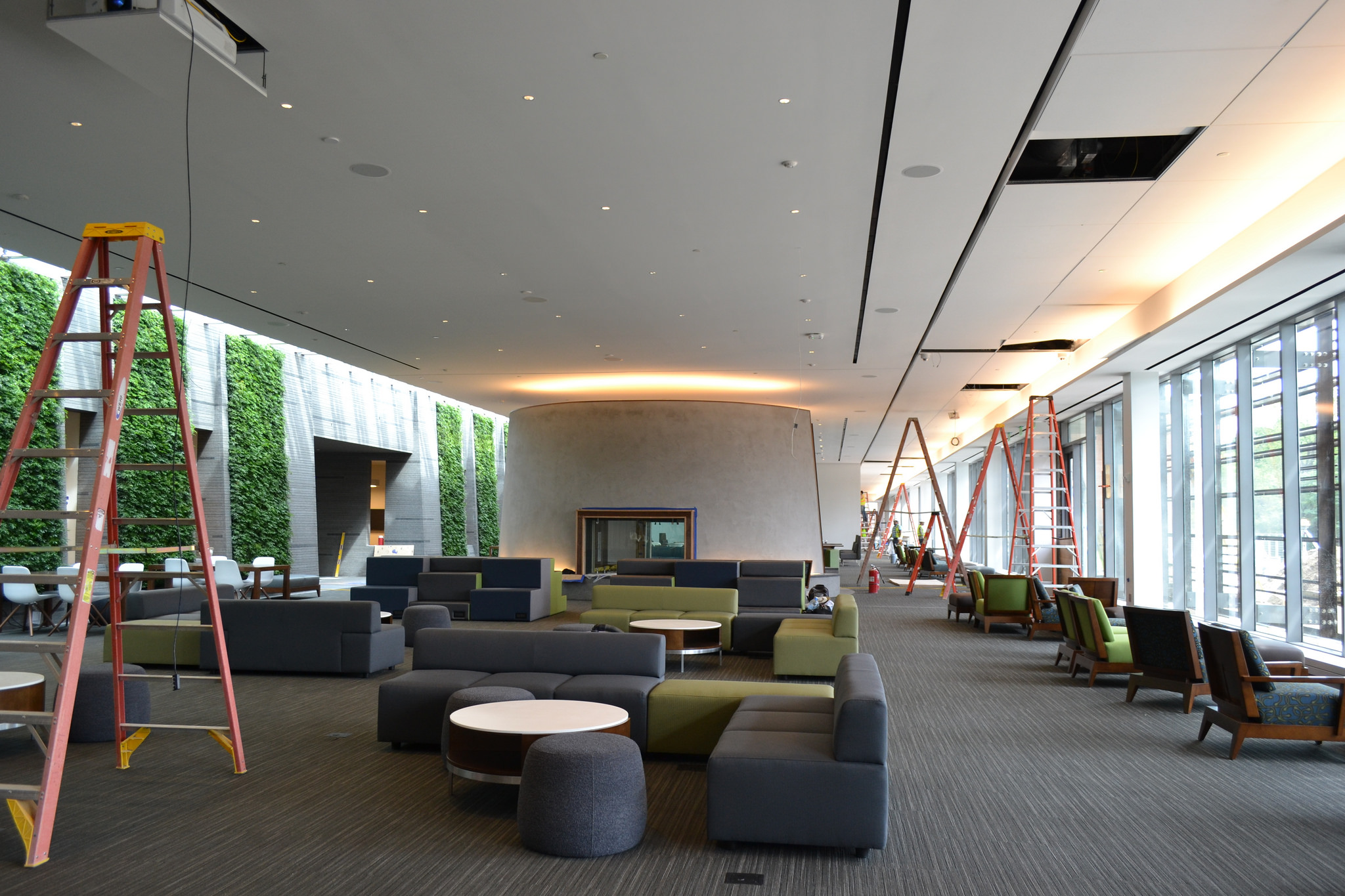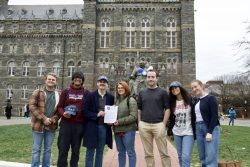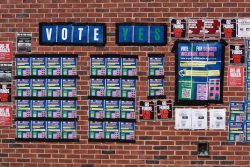Six months since the Healey Family Student Center’s grand opening, the space has become one of the campus’ most frequented gathering places. On Thursday nights, the Georgetown Program Board hosts “Breaks at 8” and doles out free desserts. Scores of high school students and their parents can be seen walking through the center during what a Blue and Gray tour guide says is a “new high point on the tours.” Much of what has come from the HFSC exemplifies the high hopes the university has for its ongoing slew of construction projects. Nonetheless, the current design of the $21 million project represents many missed opportunities.
The furniture on the first floor expose large discrepancies in how the university anticipated students to use the space and how students are actually using the space. The HFSC was envisioned as a “living room,” but because of the lack of available and appealing study space on campus students, find themselves propping up textbooks and laptops on couches better suited for leisure. The study alcoves are equipped with flatscreen televisions, but most students do not have an HDMI cable at hand. Without windows and doors to enclose the study alcove and block out conversation, noise from performances in the great room, or music from the Corp’s Hilltoss, students have little incentive to use the audiovisual equipment for presentations and group work.
The HFSC has also made only cursory considerations for performing arts students. The university chose not to replace the pianos in the music practice rooms, which have long been a source of frustration on IdeaScale. Despite being a celebrated feature of the HFSC, the two dance studios are too small in size to practically accommodate group practices and events. The blank walls surrounding Bulldog Tavern could have been an excellent opportunity for students to creatively express themselves through murals or other artwork.
Moreover, nothing on the second floor entices students to stay and use the space. The gallery opposite the dance studio still contains photos from a Nov. 2014 Georgetown University Art Aficionados exhibition. The concrete patio could have been a valuable area for a community garden or other outdoor pursuits, but so far the space has seen little use.
If the university wanted the HFSC to become a new commons for both work and play, then it has only achieved the ‘work’ portion of its original vision. If it still wishes to provide “interactive spaces designed to bring students together,” it should investigate student feedback and continue to make the HFSC a versatile space for all activities.
As the administration plans to open more shared spaces similar to the HFSC in the Former Jesuit Residence, in the Northeast Triangle’s outdoor patio, and in its long-term master planning process, the university must make considerations of student needs and wants and accommodate design and furniture acquisition decisions based on realistic assessments.





